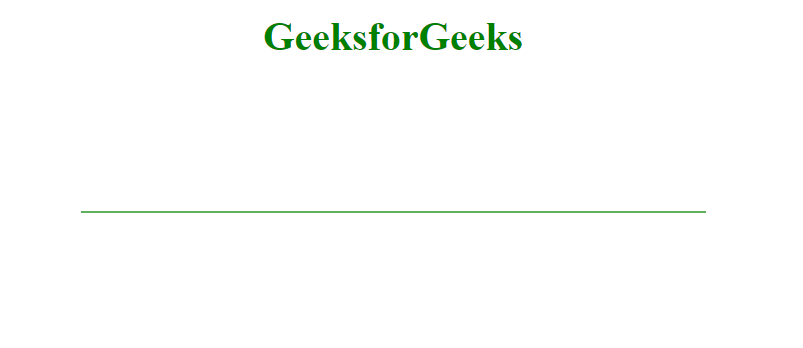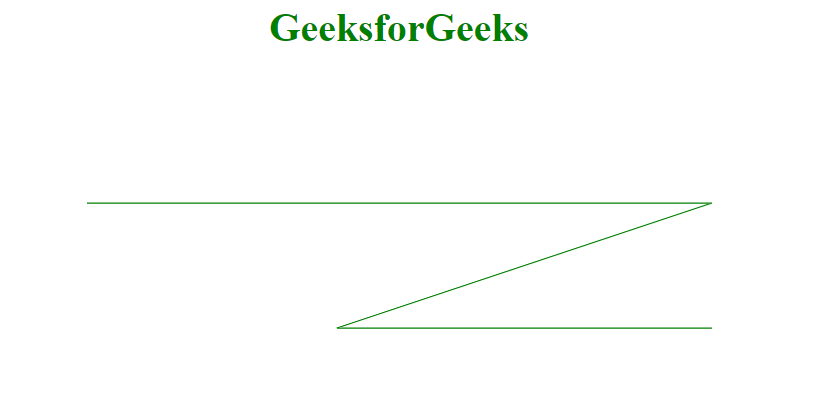D3.js line() method
Last Updated :
19 Aug, 2020
The d3.line() method is used to constructs a new line generator with the default settings. The line generator is then used to make a line.
Syntax:
d3.line();
Parameters: This method takes no parameters.
Return Value: This method returns a line Generator.
Example 1: Making a simple line using this method.
<!DOCTYPE html>
<html>
<meta charset="utf-8">
<head>
<title>Line in D3.js</title>
</head>
<script src=
</script>
<style>
path {
fill: none;
stroke: green;
}
</style>
<body>
<h1 style="text-align: center;
color: green;">GeeksforGeeks</h1>
<center>
<svg width="500" height="500">
<path></path>
</svg>
</center>
<script>
// Making a line Generator
var Gen = d3.line();
var points = [
[0, 100],
[500, 100]
];
var pathOfLine = Gen(points);
d3.select('path')
.attr('d', pathOfLine);
</script>
</body>
</html>
|
Output:

Example 2: Making a Multiconnected line.
<!DOCTYPE html>
<html>
<meta charset="utf-8">
<head>
<title>Line in D3.js</title>
</head>
<script src=
</script>
<style>
path {
fill: none;
stroke: green;
}
</style>
<body>
<h1 style="text-align: center;
color: green;">GeeksforGeeks</h1>
<center>
<svg width="500" height="500">
<path></path>
</svg>
</center>
<script>
// Making a line Generator
var Gen = d3.line();
var points = [
[0, 100],
[500, 100],
[200, 200],
[500, 200]
];
var pathOfLine = Gen(points);
d3.select('path')
.attr('d', pathOfLine);
</script>
</body>
</html>
|
Output:

Share your thoughts in the comments
Please Login to comment...